Game Log 4 – Create
1. Create Methods
We used Unity as our main prototyping tool. The materials used in the prototype were sourced from the Unity Asset Store, including the following:
Alchemist House: https://assetstore.unity.com/packages/3d/environments/alchemist-house-112442
fantasy wooden GUI Free: https://assetstore.unity.com/packages/2d/gui/fantasy-wooden-gui-free-103811
In terms of gameplay design, we transformed the original painting into a grayscale image by removing its RGB color channels. As the player progresses through the puzzle-solving process, the three channels are gradually restored, and the painting returns to its original colors. Since there is a legendary story behind this painting, the fully restored image marks the beginning of the narrative. Another painting, which appears at the end of the game, represents the story’s conclusion. Once the original painting is fully restored, this “lost scroll” — depicting the end of the story — is revealed to the player, accompanied by descriptive text that completes the narrative. We also added sound effects to the game. Each user interaction is accompanied by a corresponding sound, such as different audio cues for selecting the correct or incorrect answer during the puzzle-solving process.
Regarding the puzzle content, the story is inspired by the Danish people's longing for a better life. They boarded an immigrant ship bound for the United States, but encountered an accident at sea and were rescued by a passing American vessel. To save the passengers, the American captain threw all the cargo overboard. We designed three simple puzzles related to the place of departure, the date, and the contents of a diary. The diary entries and the final story text reflect the themes of hope for a better life, as well as the human dignity and right.
2.Process Documentation
Brainstorming
We used 6-8-5 Game Sketching to turn our initial ideas into rough drafts of some game scenes.
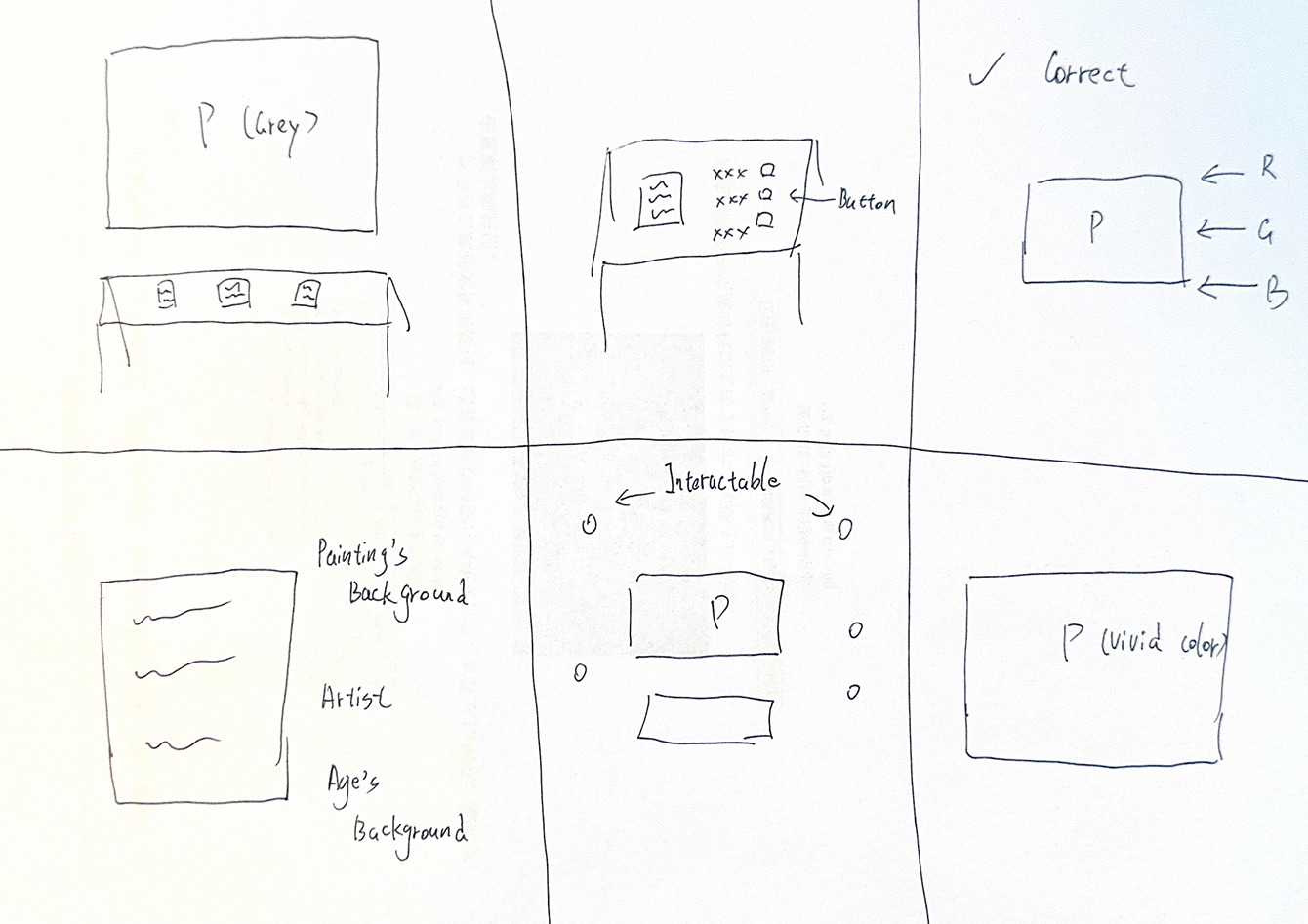
Prototyping
In the initial prototype design, we added a lot of decorations to the scene. However, our original idea was to project some interactive buttons onto a real-world table through the Quest headset, rather than relying on excessive decorative elements in the virtual environment.

Therefore, we removed all other elements and kept only the virtual table that aligns with the real-world touch surface, along with the two paintings and the items used for puzzle-solving. We also added an augmented reality effect: by placing the controller on the real table, the virtual table in the Quest is aligned with the real one based on the controller’s position. This creates a material-changing effect that enhances immersion.

3.EXPO Preparation
Concept and idea
The Lost Scroll is an AR puzzle adventure game. Players can decode and read text to understand the content of the time and the values of hope and human rights dignity reflected behind the events.
EU Value
Human dignity, Human rights.
Materials
We printed out two paintings used in the game as well as the map and calendar used for puzzles. Since the passthrough image is black and white and not clear enough when using quest2, we placed it in the position corresponding to the painting and puzzle in the game.
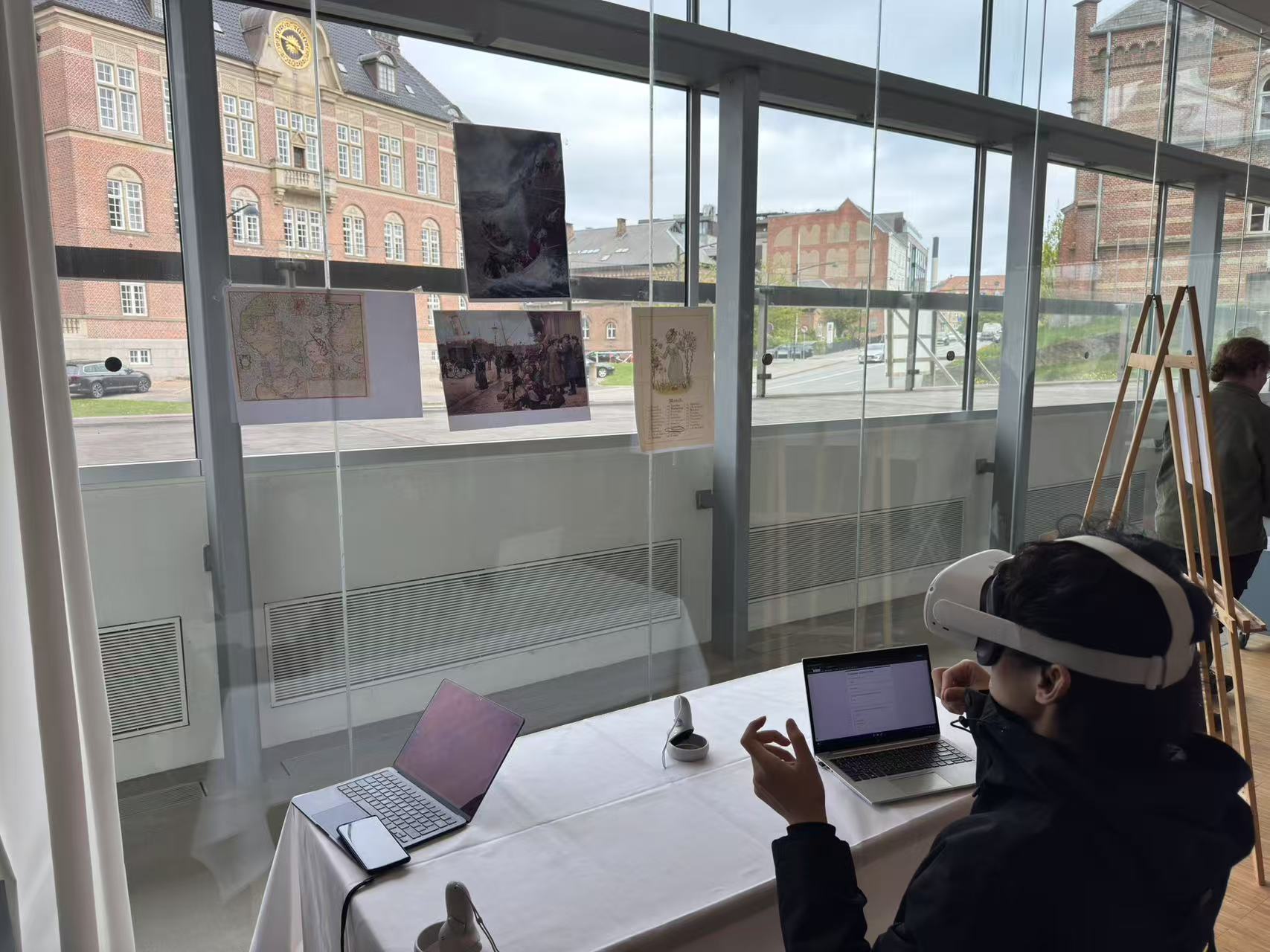
We also designed a questionnaire to evaluate our prototype.
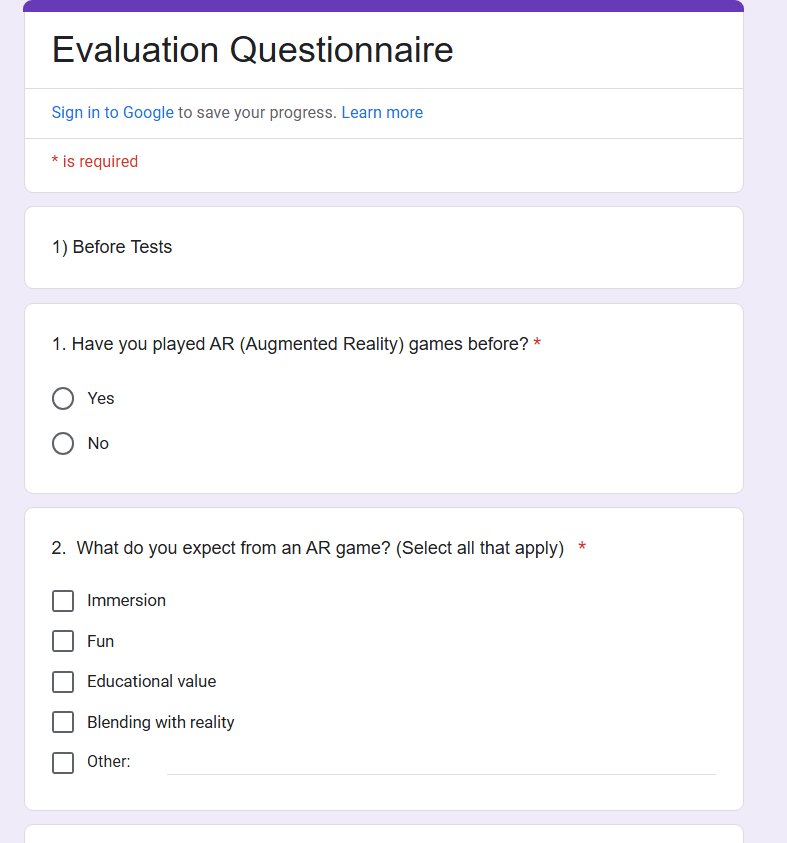
4.Technical Description and Challenge
The game includes three scenes: the initial UI scene, the puzzle-solving gameplay scene, and the final narrative scene. Each scene features a distinct UI design tailored to its function.
In the gameplay scene, we integrated the UI with physical objects to enhance immersion. A book in the scene serves as the interactive element for opening puzzles, while the answer options are represented by buttons projected onto the virtual table surface. Since the book model itself cannot directly function as a button, we overlaid a Canvas on top of the book and placed transparent buttons within it. This approach allows us to simulate the effect of using the book as a pokeable UI element. We also added ray interactions to all interactive objects in the scene, allowing users to interact with distant objects and enhancing the diversity of interactions.
Regarding the placement of paintings and puzzle items in the scene: because we are using Quest 2, the passthrough background is in black and white and lacks sufficient clarity. To address this, we incorporated virtual representations of these elements into the scene. Additionally, due to the lack of automatic alignment with real-world objects, we manually adjusted the positions of the virtual paintings and puzzle items to match their real-world counterparts.
Originally, the virtual table was fixed in the scene and could not align with physical surfaces. To solve this, we enabled players to place a controller on a desired real-world surface and press the trigger button. The system then uses the controller’s position to reposition the virtual table, allowing it to overlap accurately with the real table. This creates a material-changing effect and enhances the sense of augmented reality.
5. Evaluation
The questionnaire consists of three parts: before test, during test, and after test. We were responsible for the during test section.
We received a total of nine completed questionnaires, as some players were unable to fill them out due to time constraints.
In the before test section, we collected background information from the participants. All participants had previous experience with AR games. Most of them valued immersive experiences and enjoyment, and reported playing games either frequently or occasionally.

During the gameplay, a significant number of participants required our guidance, which highlights a lack of instructional clarity in our design.
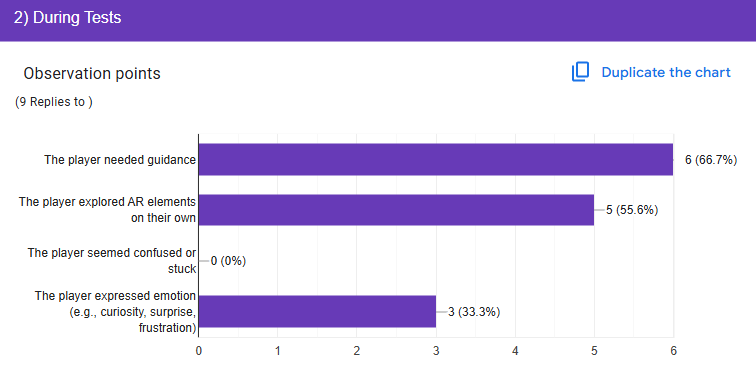
After the gameplay, participants gave neutral to strongly agree ratings regarding the intuitiveness of the game, the clarity of its objectives, the overall gameplay experience, and the extent to which they could perceive cultural heritage and values. However, some participants felt that the game difficulty was somewhat low.
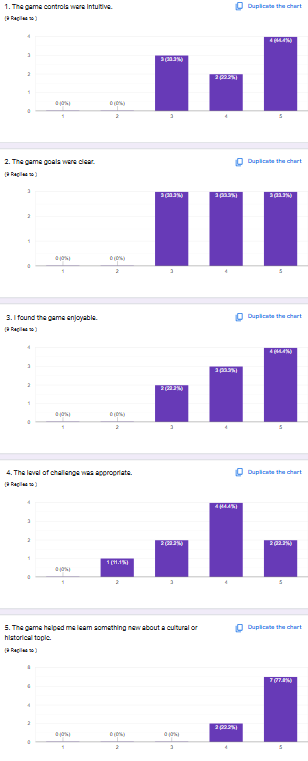
Get Game Jam Group10
Game Jam Group10
| Status | Released |
| Author | AU_AR25_Group10 |
More posts
- Game Log 3 – Imagine51 days ago
- Game Log 2 – Play77 days ago
- Game Log 1 – Experience85 days ago
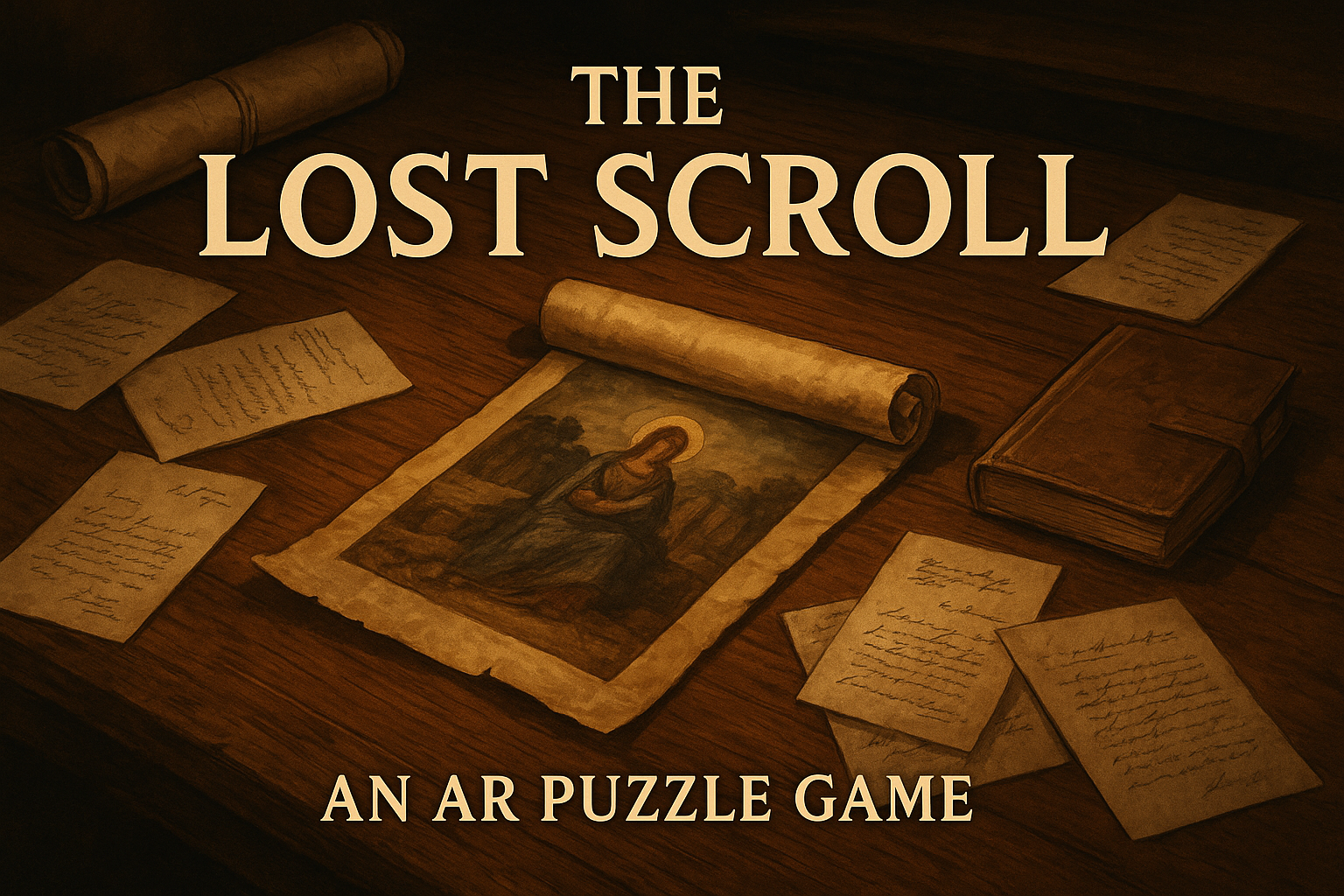
Leave a comment
Log in with itch.io to leave a comment.